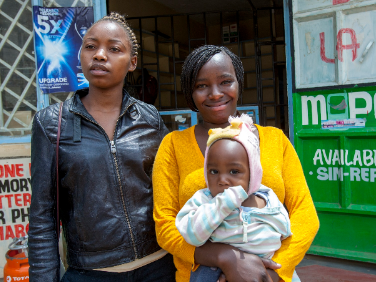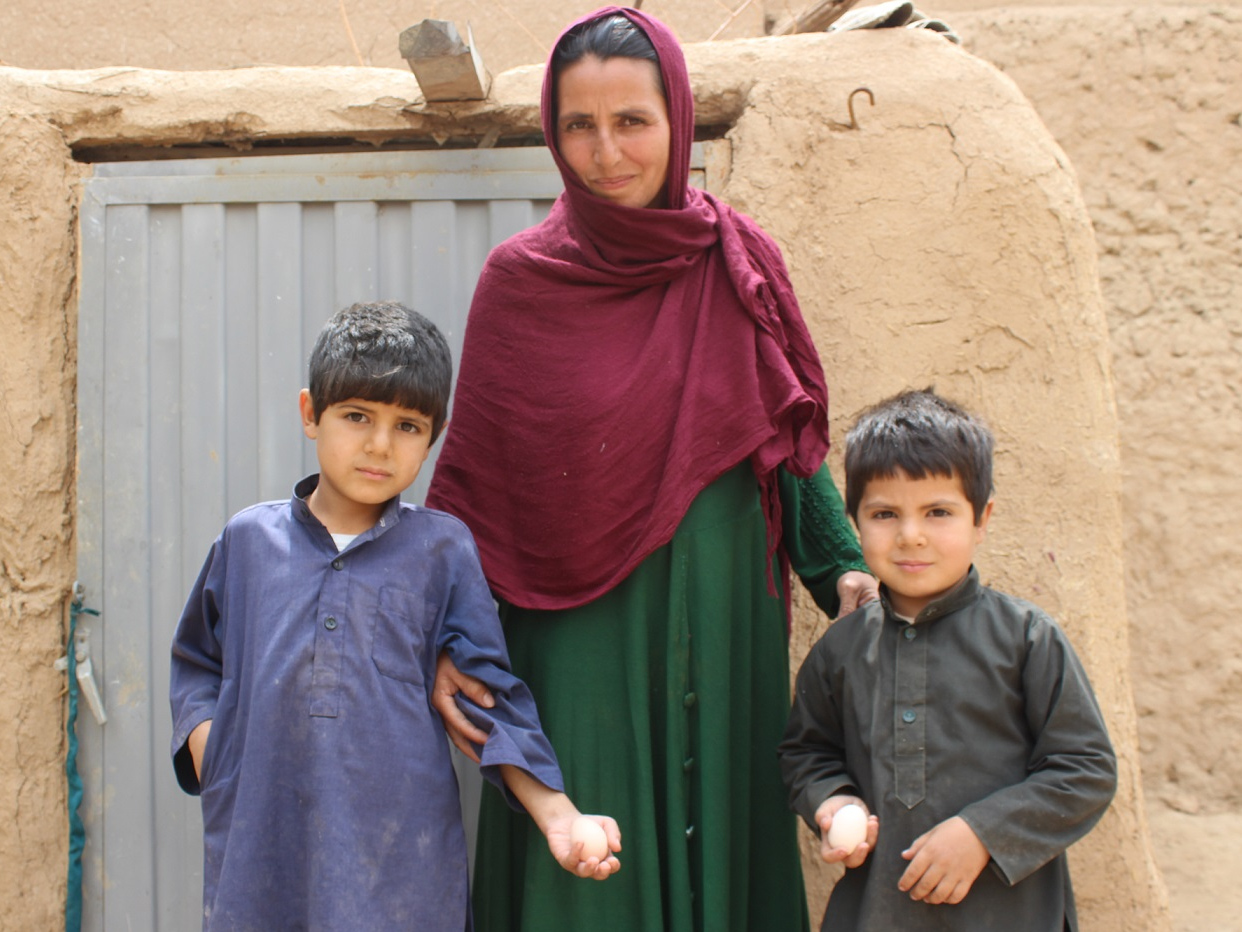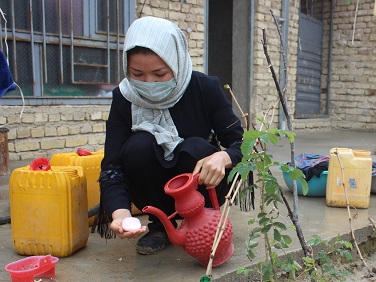Content : keeping costs low tab
Keeping costs low
Hand in Hand International is committed to keeping our overheads low. In 2019-’20, 90 cents of every dollar we raised was spent on programmes – considerably more than the average of 80 cents per dollar spent by the biggest development NGOs.
Content : AR funding our ambitions
Funding our ambitions
Hand in Hand International raised US $6.9 million in 2019-’20: US $6.1 million through our office in London, and US $0.8 million through our partner organisation in Nairobi. As of 31 March, our portfolio of programmes had a combined value of US $16.45 million.
Roughly 80 percent of funds raised came from foundations and corporate donors. Ten percent came from government institutions. And another 10 percent came from individuals.
Eighty-six percent of funds raised were in currencies other than pounds sterling, in line with Hand in Hand International’s efforts to diversify our income currencies.

Keeping costs low
Hand in Hand International is committed to keeping our overheads low. In 2019-’20, 90 cents of every dollar we raised was spent on programmes – considerably more than the average of 80 cents per dollar spent by the biggest development NGOs.

Awards
For the second year running, Hand in Hand was named Charity of the Year by the UK-based Association of Corporate Treasurers (ACT), a global professional treasury body with 6,500 members and students in 90 countries. The ACT’s Annual Gala in autumn saw Hand in Hand raise US $70,000 – enough to fund the creation of 350 microbusinesses and 450 jobs – and featured appearances from Prince Charles (on video) and Britain’s most decorated Olympian, Chris Hoy.

Events
Events at the House of Lords and a historic brewery in the City of London raised approximately US $200,000. The latter event, held jointly with Sweden-based children’s charity Star for Life, featured a talk from economist John Kay and former Governor of the Bank of England Mervyn King.

Financial overview
As a result of complications stemming from coronavirus, Hand in Hand’s audited accounts will not be available until January 2021. Please visit again later to view our accounts.
AR Evidence 2 – Kiboko
92 percent of members were still saving (86 percent regularly)
80 percent of enterprises were still operational – and expecting to grow (identical to the new business survival rate in the US)
87 percent of jobs still existed. Members had increased their incomes, on average, by more than 100 percent
The report also made a number of recommendations, including carrying out more research, improving data collection and analysis methods, and strengthening mechanisms for feedback from members. In the time since, we’ve _______.
Read the reportAR evidence 1 – 60 Decibels
Hand in Hand’s training is useful
95 percent of respondents said they were still using it in their business
Our training improves people’s lives
95 percent saw improvements in their quality of life. Bigger incomes were the main reason why
Hand in Hand goes where others don’t
92 percent of respondents said there was no alternative to Hand in Hand where they lived
They prefer Hand in Hand
Among respondents who had an alternative, 85 percent preferred our programmes
Asked for suggested improvements, respondents cited a range of issues. Increased financing was far and away the most common, at 34 percent. More frequent communication and more convenient access combined to for 29 percent. And expanded content rounded out their top concerns at 11 percent.
With controlled numbers of servicing hard-to-reach areas, frequency of communication and ease of access are structural issues that won’t be easily overcome. But teams in Kenya are already trialling expanded financial solutions including collateral-free loans and longer repayment periods. At the same time, expanded content in the shape of our accelerator project is set to launch in 2020-’21.
Download the reportContent : AR evidence tab 2 – kiboko
Microbusiness sustainability
By teaching our members the skills they need to run their own micro-enterprises, Hand in Hand necessarily puts sustainability at the core of our work. What good is a livelihood if it doesn’t long outlast our training?
Earlier this year, we published a report after checking up on members from a project in Kenya nine months after their training had concluded. Were they still saving? Were their enterprises still going strong? Had Hand in Hand made good on our promise to help them sustainable businesses?
Here’s what we found.
92 percent of members were still saving (86 percent regularly)
80 percent of enterprises were still operational – and expecting to grow (identical to the new business survival rate in the US)
87 percent of jobs still existed
Members had increased their incomes, on average, by more than 100 percent
The report also made a number of recommendations, including carrying out more research, improving data collection and analysis methods, and strengthening mechanisms for feedback from members. In the time since, we’ve _______.
Content : evidence tab 1 – 60 DB
Understanding members’ needs
From designing new projects to evaluating old ones, Hand in Hand puts our members at the centre of everything we do. That’s why we asked 60 Decibels – sector leaders in measuring impact through a “customer feedback lens” – to find out what they’re saying about our work.
For two weeks in November, the team at 60 Decibels interviewed more than 170 members in Kenya who’d completed our training, all within the last two years.
Here’s what they had to say.
Hand in Hand’s training is useful
95 percent of respondents said they were still using it in their business
Our training improves people’s lives
95 percent saw improvements in their quality of life. Bigger incomes were the main reason why
Hand in Hand goes where others don’t
92 percent of respondents said there was no alternative to Hand in Hand where they lived
They prefer Hand in Hand
Among respondents who had an alternative, 85 percent preferred our programmes
Asked for suggested improvements, respondents cited a range of issues. Increased financing was far and away the most common, at 34 percent. More frequent communication and more convenient access combined to for 29 percent. And expanded content rounded out their top concerns at 11 percent.
With controlled numbers of servicing hard-to-reach areas, frequency of communication and ease of access are structural issues that won’t be easily overcome. But teams in Kenya are already trialling expanded financial solutions including collateral-free loans and longer repayment periods. At the same time, expanded content in the shape of our accelerator project is set to launch in 2020-’21.
Content : AR evidence
Links: AR Entrepreneur stories
Entrepreneur stories
Content : AR coronavirus response
Content : AR displaced people
Our work with displaced people
Last year, more than 700,000 Afghan refugees were forced home from neighbouring Pakistan and Iran – the equivalent, in this relatively small country, of almost the entire population of New York City arriving in the US. But even they are only a fraction of the nearly 4.5 million returnees and internally displaced people (IDPs) forced to relocate within Afghanistan in recent years – in US terms, the whole of California.
Without jobs or even family and friends to help them find their feet, Afghanistan’s displaced people face acute poverty and food insecurity. That’s why Hand in Hand is working with GIZ, the German government’s development agency, to help them thrive in the country’s poultry value chain.
Poultry farming is ideal for returnees and IDPs. Skills are easily learned. Food security improves overnight. Incomes, compared to other rural sectors, are high. And increases are quickly realised. The average beneficiary in an earlier poultry project run by Hand in Hand earned a monthly net income of 1,771 AFN (US $23.50) within one year, in many cases starting from zero.
Building on that success, this year we provided 1,894 displaced Afghans – 90 percent of them women; 60 percent of them aged 18 to 35 – with the training and tools they needed to launch their own poultry businesses. We also provided gender sensitisation training to all project members covering subjects including the need for women ‘s employment and gender equity in Islam.
By the time to the project concludes in early-2021, we’ll have helped some 4,500 displaced Afghans put down roots, establish profitable poultry businesses and work their way out of poverty, for good.
By the numbers
Average income of US $23.50/mth (starting from $0)
1,894 displaced Afghans mobilised this year
90% of project members are women



